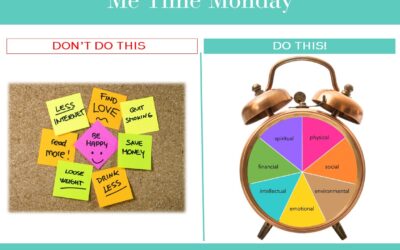 The following was exclusively written for PBS/Next Avenue
The following was exclusively written for PBS/Next Avenue
It was a low point for Jenny Montalbano back in 1996. She was divorcing her husband and feeling all alone. She knew she had to get out of the house and do something to keep her mind and hands occupied. She found her solace in the preparation kitchen of God’s Love We Deliver (GLWD), a nonprofit meal delivery volunteer organization servicing greater New York City and parts of New Jersey founded in 1985.
“I was volunteering my time in the SOHO food kitchen and even though I was helping them, God’s Love We Deliver really helped me through a very tough time – it became my emotional rescue,” says Montalbano. Having grown up in a traditional Italian American family, Montalbano shares, “I grew up in a household where food was comfort so helping to give meals back to others has become my passion these last 16 years.”
According to the Meals on Wheels Association of America (MOWAA), more than 5-6 million seniors over age 60 go hungry every day. Many are homebound, unable to grocery shop or prepare meals for themselves because of things such as painful arthritis, macular degeneration or lack of energy to cook if they are battling a devastating disease such as cancer or COPD. MOWAA, the national arm of a vast network of 5,000 local community agencies, delivers one million meals daily all through the efforts of its nationwide volunteer network.
For many family caregivers, especially the 7-8 million who live long-distance from their loved one, having a nutritious, fresh meal delivered to a loved one is a gift that is truly comfort for all. Some organizations, such as Feeding America, or the many local food banks that feed the hungry and homeless, require the recipient be able to come get their meal or prepare their meal. But many seniors are homebound and struggle with cooking so the prepared meal delivered daily becomes a life-saving solution.
“We usually talk about senior hunger issues during hard economic times and then the story is over, but the fact of the matter is hunger is not dependent on economic times any more than it is dependent on the weather,” says Enid Borden, ceo and president of the National Foundation to End Senior Hunger. She also says while poverty is a predictor for senior hunger, this issue is becoming more of a middle class issue. Statistics show 50 percent of those older Americans going hungry are above the national poverty level. In fact, a MOWAA report found 1 in 9 seniors are “food insecure” and the most at-risk are baby boomers age 60-64.
Part of the issue according to Borden is many of these hungry seniors are homebound so we don’t see them in the course of our daily life the way we might see news reports of food kitchens. “Seniors who face the threat of hunger are really the hidden hungry – hidden from society in terms of their inability to be outside in our communities but also because many seniors perceive a stigma with this issue and they don’t talk about it.”
Home Alone
In addition to the stigma and health risks, another issue associated with senior hunger can be isolation. The MOWAA report found single seniors are most at risk for food insecurity.
One of the biggest concerns caregivers may have about their older loved one is isolation, particularly those loved ones living alone at home because they recently lost a spouse or partner. When an older person does not have someone to talk to, does not attend church or synagogue or is not seeing family and friends regularly, this can lead to isolation and ultimately depression and other health issues such as not eating. Seeing a daily volunteer who delivers meals and checks in on seniors can have a tremendous positive impact.
“Many people don’t realize that sometimes the meal delivery driver is the only social visit a senior may receive during the day,” says Em Findley, communications coordinator for God’s Love We Deliver (GLWD). “That is why we take great pride in not only delivering nutritious, delicious meals but also bringing a smiling face to the door to brighten a senior’s day.”
Caroline Sorensen, a high school senior in New York who volunteers with Meals on Wheels, recently told me, “I love knowing I made someone’s day easier and happier.” She has been a teen volunteer for Meals on Wheels through her school for four years and she has a favorite older delivery recipient. “Doris always comments on my hair, it is long and silky and we talk about the latest in hair fashion,” says Caroline. “She laughs that her hair is not quite that pretty anymore – but instead of making her sad it’s a fun conversation we have every time I see her. And, she always wants to make me tea so we sit for a few minutes and talk – I always feel good after I leave her.”
When disasters occur, such as Hurricane Sandy which devastated New Jersey and New York’s five boroughs especially Staten Island, Queens and the Jersey Shore this October, meal delivery services struggle to maintain the sustenance their clients need.
“We lost power for one week after Sandy hit,” says Findley of GLWD. “However, due to the herculean efforts of our volunteers, we created 2,300 ‘Sandy bags’ of perishable food and got them to local Red Cross shelters and local churches to continue to help and we were still able to get 8,000 meals donated and delivered.”
Soul Food
“Food is both love and medicine,” says GLWD’s Findley. Since drivers often spend a few minutes talking to the meal recipient, they bring both food and friendship to lonely seniors. “One client told our driver, ‘I can feel the love in every bite.’”
What makes GLWD unique is each of the 20,000 meals they deliver every week is customized for clients, there is no wait list and no age requirement (to qualify for Meals on Wheels you must be age 60 or over or live in senior housing). In fact, 78 percent of their clients are age 50+ and many live in Manhattan where volunteers deliver meals on foot. They have nutritional counselors who talk to clients about special needs and personalize each meal whether it’s kosher meals, diabetic meals, gluten-free meals or even pureeing meals for those clients who have trouble chewing. As with MOWAA, meals can also be delivered for the family caregiver.
“We know sometimes the caregiver is at much at risk for hunger or poor nutrition as the senior,” says GLWD’s Findley. “Caregivers are often struggling with financial issues, physical caregiving and other challenges – if we can provide the meals to keep both caregiver and care recipient nourished that is part of our mission.” Findley reports over the last two years GLWD has seen a 40 percent increase in requests for meals for the family caregiver of those clients over age 65.
In addition, meal delivery may be the answer in helping caregivers keep an older loved one living in the home they love instead of contemplating nursing home living. A recent report from Brown University researchers found the states who subsidized meal delivery costs through the Older Americans Act have a correlation to a reduction in the percentage of relatively healthy seniors in nursing homes. Published in Health Services Research, researchers found for instance, “in Washington state, which spends just $8 on subsidized meals for every senior state resident, nearly 17 percent of the nursing home population is made up of those with minimal health needs,” meaning they may need low-care and not the full suite of services nursing homes provide.
A few years ago, Montalbano’s mom developed stage 4 cancer. Montalbano had just started a new full-time job so she turned to GLWD to help deliver meals for her mom for the last month of her life so Montalbano could keep her at home.
“I’ve been on both sides – as giving and receiving – of the special gifts God’s Love We Deliver provides,” says Montalbano. “Nothing lifts your spirit more than to volunteer to feed a senior. As a caregiver, I’ll always cherish that my mom saw a friendly driver who came to the door every day to bring her a meal and a smile. I tell people God’s Love We Deliver was a God-send. They fed my mom physically but they fed both of us emotionally.”
How You Can Help This Holiday Season – Eat, Pray, Love
In her best-selling memoir, Eat, Pray, Love, Elizabeth Gilbert discovers one of the best gifts in life is giving to someone else in need. If you want to deliver a little soul food this holiday season, here are ways you can volunteer to spread the holiday spirit:
God’s Love We Deliver – looking for volunteers for Christmas Eve and day to help with deliveries in New York’s five boroughs and neighboring New Jersey
Meals on Wheels Association of America – find a local chapter through this national site or donate – $7 feeds a hungry senior for the day
Check with your local faith-based organization and visit the National Volunteer Caregiving Network to find a local meal delivery program through faith-based groups in your area – volunteer drivers are often needed
Donate $1 to the National Council on Aging (NCOA) hungry senior campaign and NCOA will connect a vulnerable older adult to $40 annual benefits to help pay for food






0 Comments